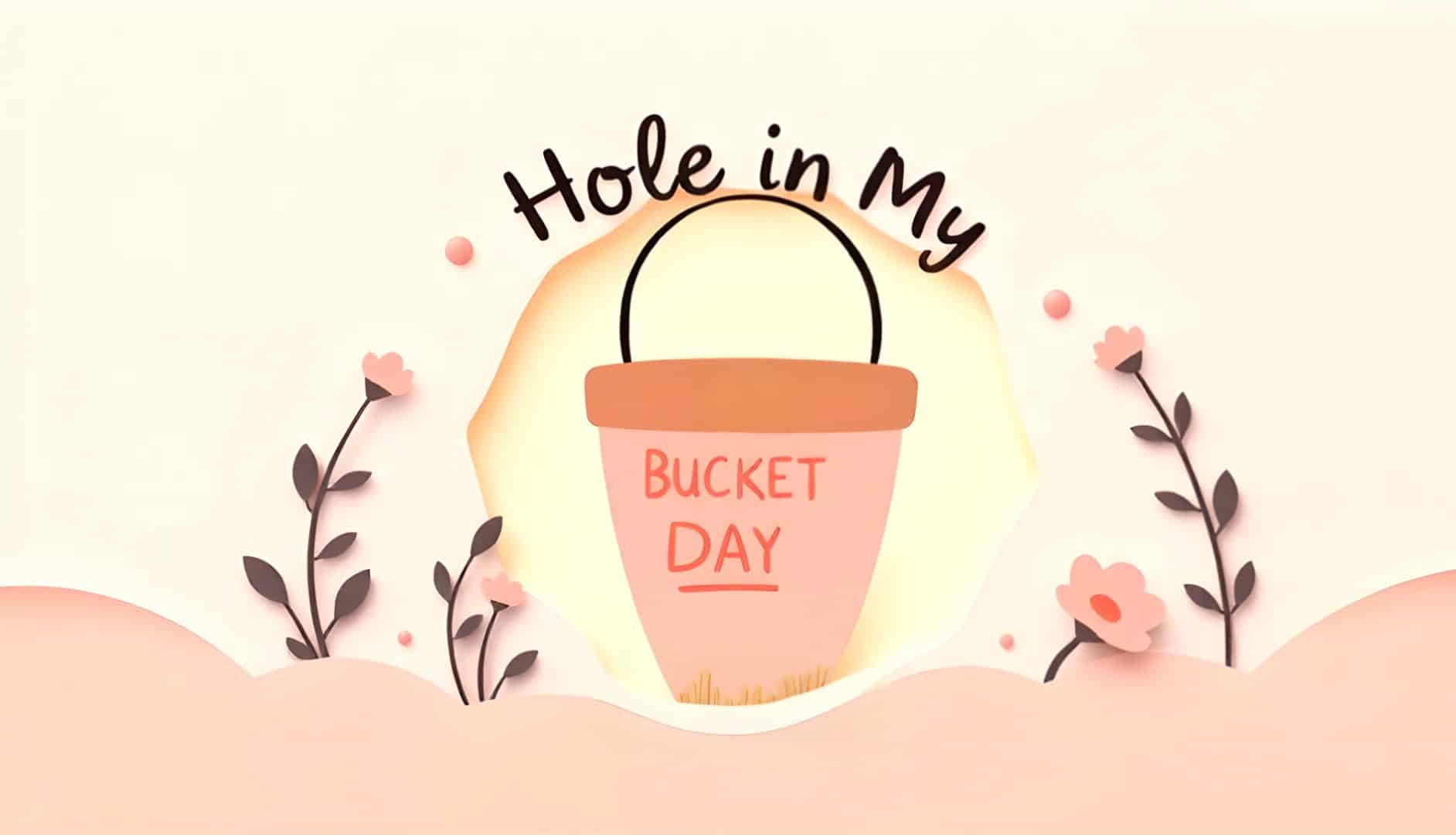What is National Hole In My Bucket Day?
National Hole In My Bucket Day is celebrated every year on May 30 in the United States. The day honours the classic children’s song “There’s a Hole in My Bucket,” a humorous dialogue between two characters trying to solve a simple but looping problem.
The song has entertained generations with its charm and circular logic. This day invites families, educators, and music lovers to revisit the tune, laugh at the back-and-forth, and enjoy its playful spirit.
History and Origin
The song “There’s a Hole in My Bucket” dates back to 18th-century Germany. It was first recorded in a folk collection under the title “Heinrich und Liese.” The song tells the story of Heinrich asking Liese for help fixing his broken bucket, only to end up back where he started.
The song gained popularity in English-speaking countries during the 20th century. It was made famous in part by a duet recording from Harry Belafonte and Odetta. Though the origins of the day itself are unclear, it has become a time to appreciate traditional songs and the joy of storytelling through music.
The song’s structure teaches problem-solving and sequencing, making it a favourite in classrooms and music education.
Who Participates in National Hole In My Bucket Day?
- Families with children: Sing the song together, act it out, or make up new verses.
- Teachers and schools: Use it in lessons about cause and effect or creative thinking.
- Folk music fans: Explore the song’s history or listen to vintage recordings.
- Libraries and museums: Share the cultural journey of the song across countries and generations.
- Craft groups: Use the day as inspiration for themed DIY projects and bucket decorating.
Slogans and Themes
Themes often revolve around fun, tradition, and absurd solutions. Slogans include “Fixing Leaks with Laughter,” “A Bucketful of Fun,” and “Round and Round It Goes.” The humour and simplicity of the song are the focus of the day.
Colors symbols and patterns
Colors
- Yellow: Reflects cheerfulness and the sunny tone of the song.
- Blue: Evokes the idea of water, which the bucket can’t hold.
- Red: Adds energy and playfulness to decorations or materials.
Symbols
- Bucket with a hole: The star of the song and the visual centre of the day.
- Cartoon characters: Representing Heinrich and Liese or their local equivalents.
- Musical notes: Used to highlight the song’s rhythmic, repeated structure.
Patterns
- Circular arrows: Symbolise the looping nature of the problem.
- Drip marks: A playful design element representing the leaking bucket.
- Lyric snippets: Printed as design details for posters or shirts.
Most Used Hashtags
- #HoleInMyBucketDay
- #TheresAHoleInMyBucket
- #BucketSong
- #May30
- #FolkMusicFun
How to Celebrate National Hole In My Bucket Day:
- Sing the song: Gather a group and perform it together, with voices or instruments.
- Make a craft: Decorate a real or paper bucket, or create puppets to act out the story.
- Tell the history: Learn how the song travelled from Germany to the world.
- Laugh with the logic: Use the song as a conversation starter about circular thinking.
- Post a video: Share your own version of the song using one of the day’s hashtags.
Why is National Hole In My Bucket Day Important?
This day keeps folk tradition alive in a fun and accessible way. The song teaches us that not every problem has an easy fix and that humour can be found in repetition and daily life.
National Hole In My Bucket Day reminds us to value storytelling, patience, and laughter. Whether you’re learning the song for the first time or remembering it from childhood, it’s a lighthearted way to connect across generations.
Features
May 30: Hole In My Bucket Day (United States)
Why do you keep falling for the same type?
Read the article Lovemaps: the hidden blueprint of our love.

